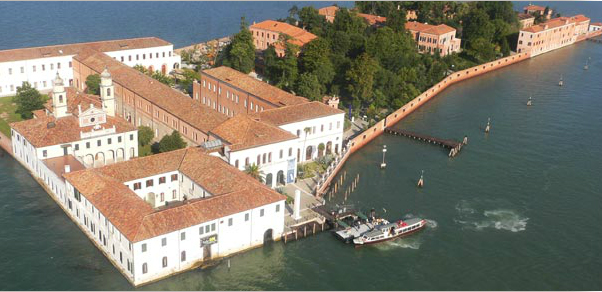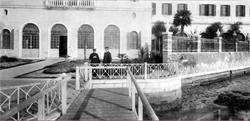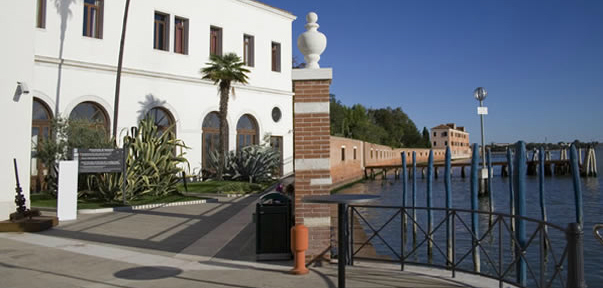|
San Servolo Complex
The island of San Servolo extends over 4.82 hectares, almost ten times the size of the original sand dune created by the natural geological evolution of the lagoon. The monumental island complex is nowadays a centre of excellence for cultural and social development.

History

|
Prior to its present use the island was home to a monastery, followed by a psychiatric hospital until 1978.
For over a thousand years the island hosted diverse monastic orders.
Between 764 and 804 the Calbana family erected the church, dedicated to Saint Servolo, with an annexed convent. However only in 1109 the island became the regular seat of the convent with the arrival of the Benedictine nuns. They were to remain there for five centuries, until 1615 when they were transferred to the city of Venice itself.
|
|
From 1647 the complex was offered to the 200 Benedictine, Dominican and Franciscan nuns who had been resident on the island of Candia (Crete) to save them from the Turkish conquest. The nuns were to inhabit the island until 1716, when the convent was closed.
By the time the island was practically uninhabited and the Senate of the Republic thus decided to use the ex-convent as the seat of their new military hospital (at this point in history Venice was fighting the Turks). A plan was drawn up for restructuring the islandís buildings and the pharmacy, whose products were made by the friars.
|

|
Restoration
The Province of Venice, which had remained the owner of the island, guaranteed its protection. In the 90ís began the project for the re-animation of the island from a place of suffering into one of multicultural activity.
The works were concluded in 2003, returning the island to its original form tied to the lagoon environment, with large historic buildings facing Saint Mark, extensive parkland, a surrounding wall and water defenses.

Restoration was not just about giving back the buildings their splendour, but rather to give back to the city, to its citizens, their architectural, cultural and historical heritage.
|
|




